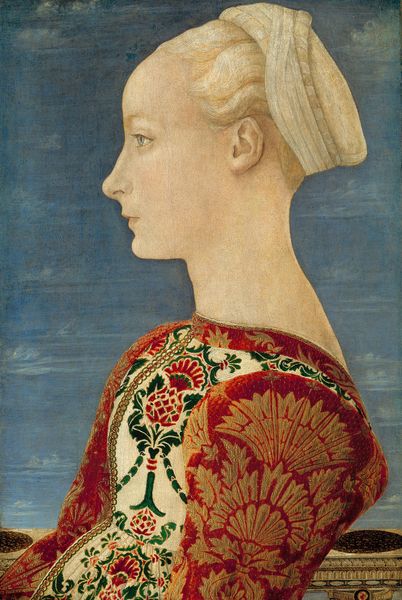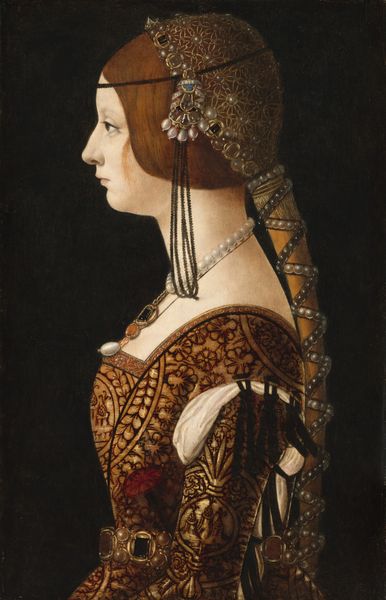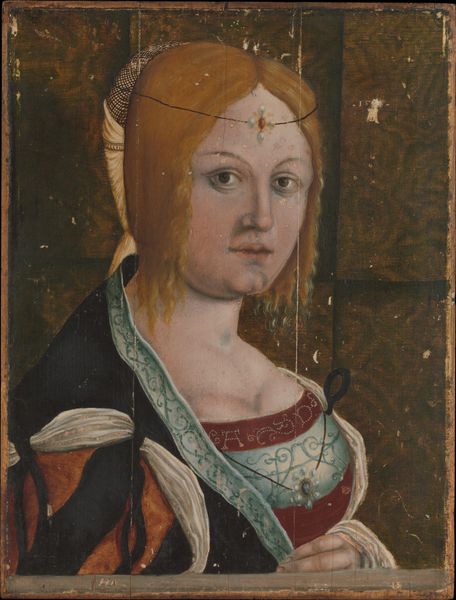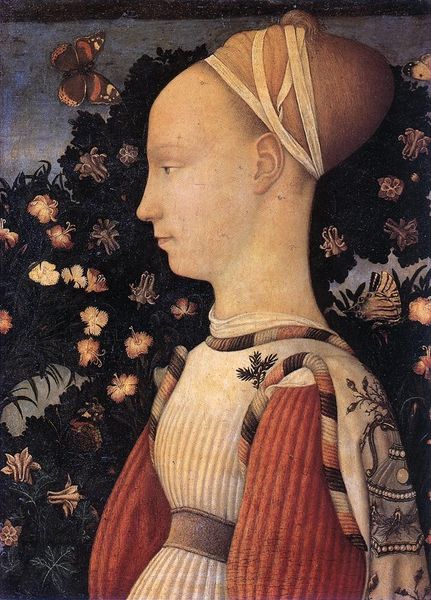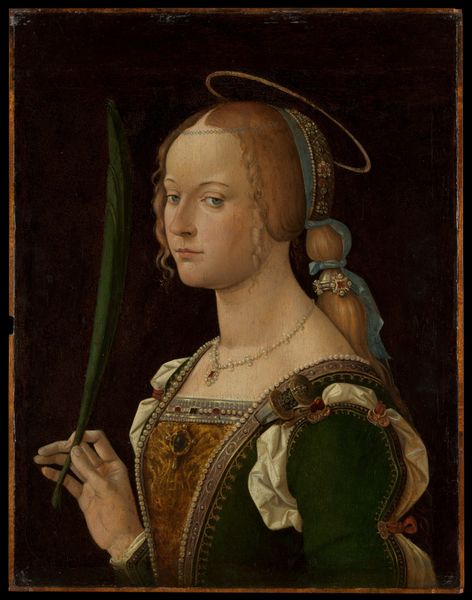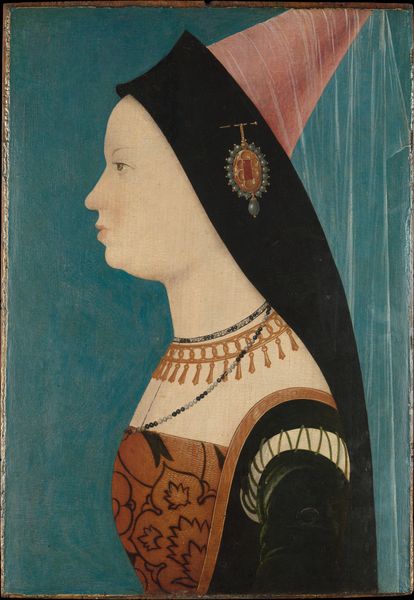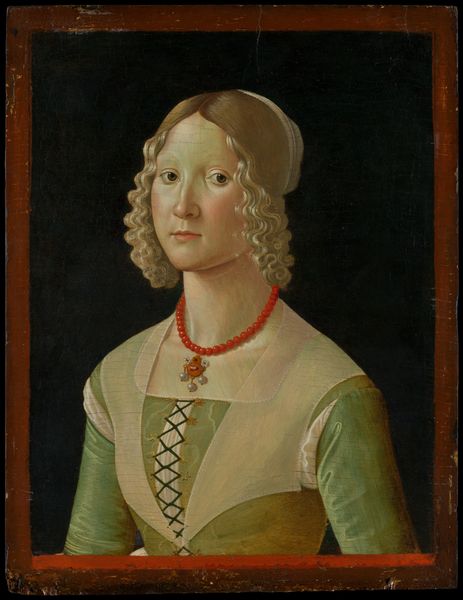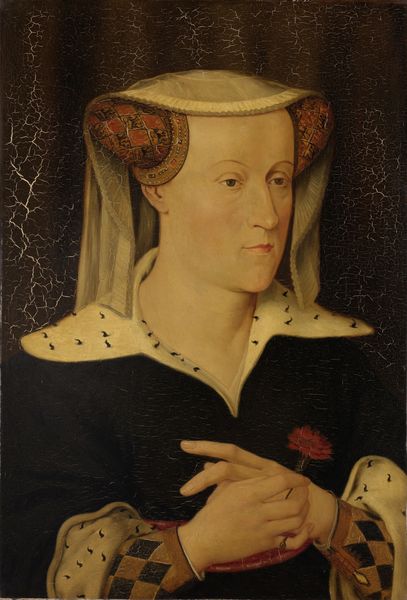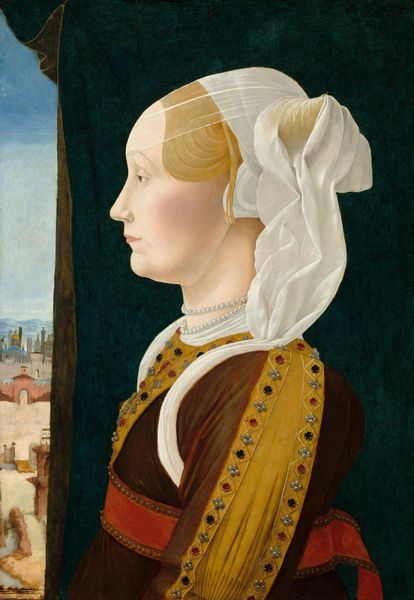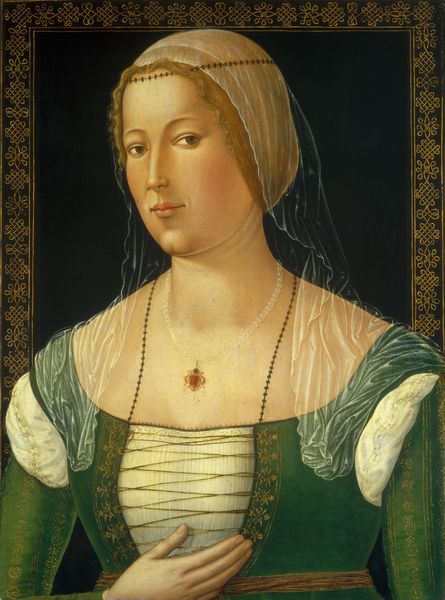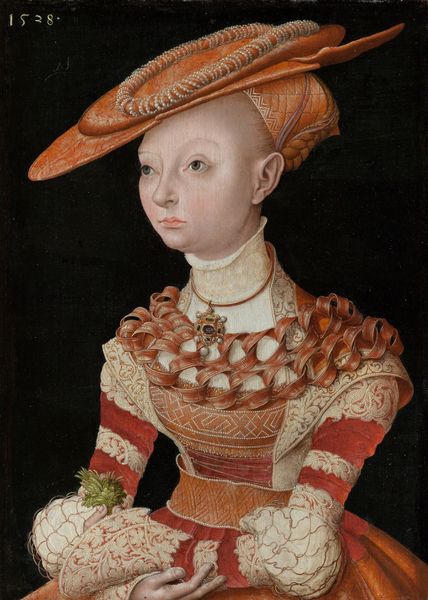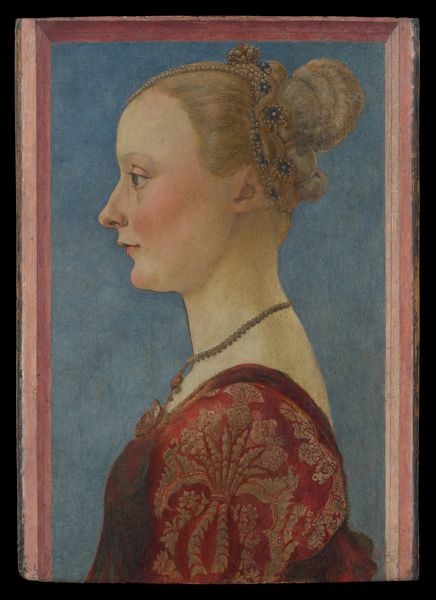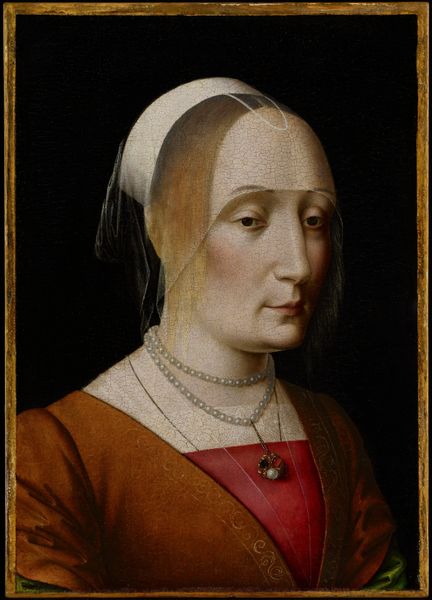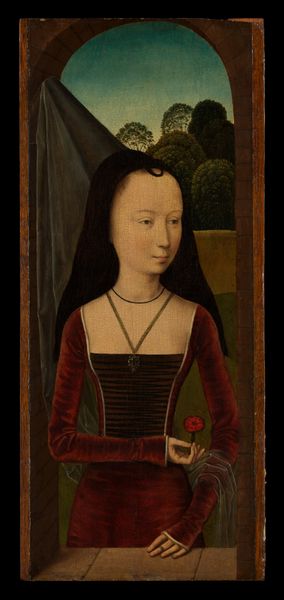
oil-paint
#
portrait
#
oil-paint
#
figuration
#
oil painting
#
intimism
#
geometric
#
italian-renaissance
#
portrait art
Copyright: Public domain
Curator: Let's discuss Lo Scheggia's "Portrait of a Lady," created around 1460. It's an oil painting and remarkable for its meticulous detail. What strikes you first about this image? Editor: The geometric forms used throughout are interesting. Look at the woman’s hairstyle combined with the patterns of her dress against the severe flatness of the dark backdrop – it's surprisingly compelling in its simplicity, even a little melancholic. Curator: The contrast is important. Consider the labor involved. Creating such fine details with oil paint on panel would have been an extremely meticulous and time-consuming process. Notice how the intricate patterns on her dress, the subtle gradations in skin tone, everything speaks to immense craft. And oil paint afforded the ability to produce these effects! Editor: Absolutely. But what about *her*? A wealthy woman, no doubt, signaled through the costly materials of her clothing and jewelry. This portrait acts as both an individual likeness and a representation of class. How does her agency manifest, or perhaps is repressed within this carefully constructed image? Curator: Good point. You're right to note the deliberate representation. But to your original feeling, doesn't the flatness itself almost democratize the process? The black ground minimizes distraction, focusing our attention on the artist’s technical skill and, crucially, the costly materials used. We, as viewers, can almost grasp the process of construction. Editor: I find myself focusing on the symbols surrounding her. Even the initials in the background above and to the side could symbolize much about the lady depicted in the artwork and would likely not be included without purpose. The butterfly/jewel attached to the thin strap around her head might speak to identity in the painting, while, equally, functioning merely as decorative material. These symbols can’t be ignored and contribute to the image beyond their pure function. Curator: It’s tempting to read those symbols and connect them to the sitter’s identity and the means of her status, I agree. But isn’t the pure process of creating the artwork, the work, what it comes down to? The means that allowed her likeness to exist are all based around the materials it’s composed of, while they create meaning. Editor: I concede to a connection between material production and contextual elements that elevate it, allowing a reading of societal and political implications around Lo Scheggia's work. Curator: Exactly. It’s through understanding the materials and processes that we can read deeper meaning in the "Portrait of a Lady." Editor: Yes, seeing both sides clarifies the depth and ongoing relevance of this striking artwork.
Comments
No comments
Be the first to comment and join the conversation on the ultimate creative platform.
